Motorola Razr 2020 vs Samsung Galaxy Z Flip: which foldable phone is for you?
What's the best clamshell foldable on the market?
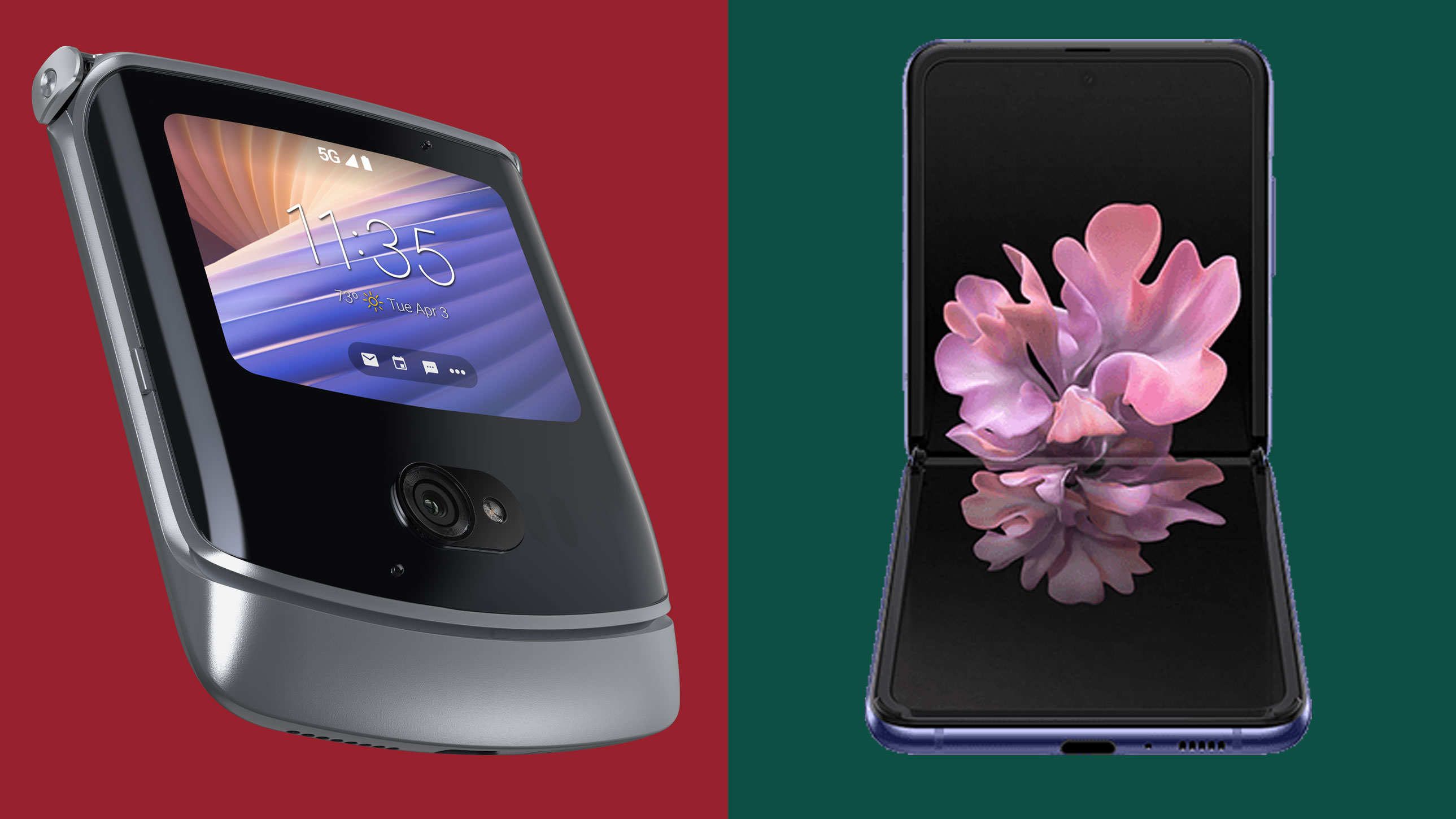
Now that the new Motorola Razr 2020 has displaced its predecessor, we've got another chance to compare the best clamshell foldables on the market. So how does the Motorola Razr 2020 vs Samsung Galaxy Z Flip pan out?
The Razr 2020 and Z Flip may look largely similar, but their specs and functionality are fairly different. In general, the Z Flip has higher specs and a sharper display, while the Razr 2020 has a sleek look and functional external display for limited app and camera use.
The clamshell foldable smartphone format is still very much in its infancy, and these particular devices are some of the first of their kind to market, each with their own design philosophy. So while we might feel more strongly about one over the other, they’re distinct approaches to the challenge of constructing a typical smartphone that can fold in half.
So without further pontificating, here’s exactly how the Motorola Razr 2020 and Samsung Z Flip differ, section by section.
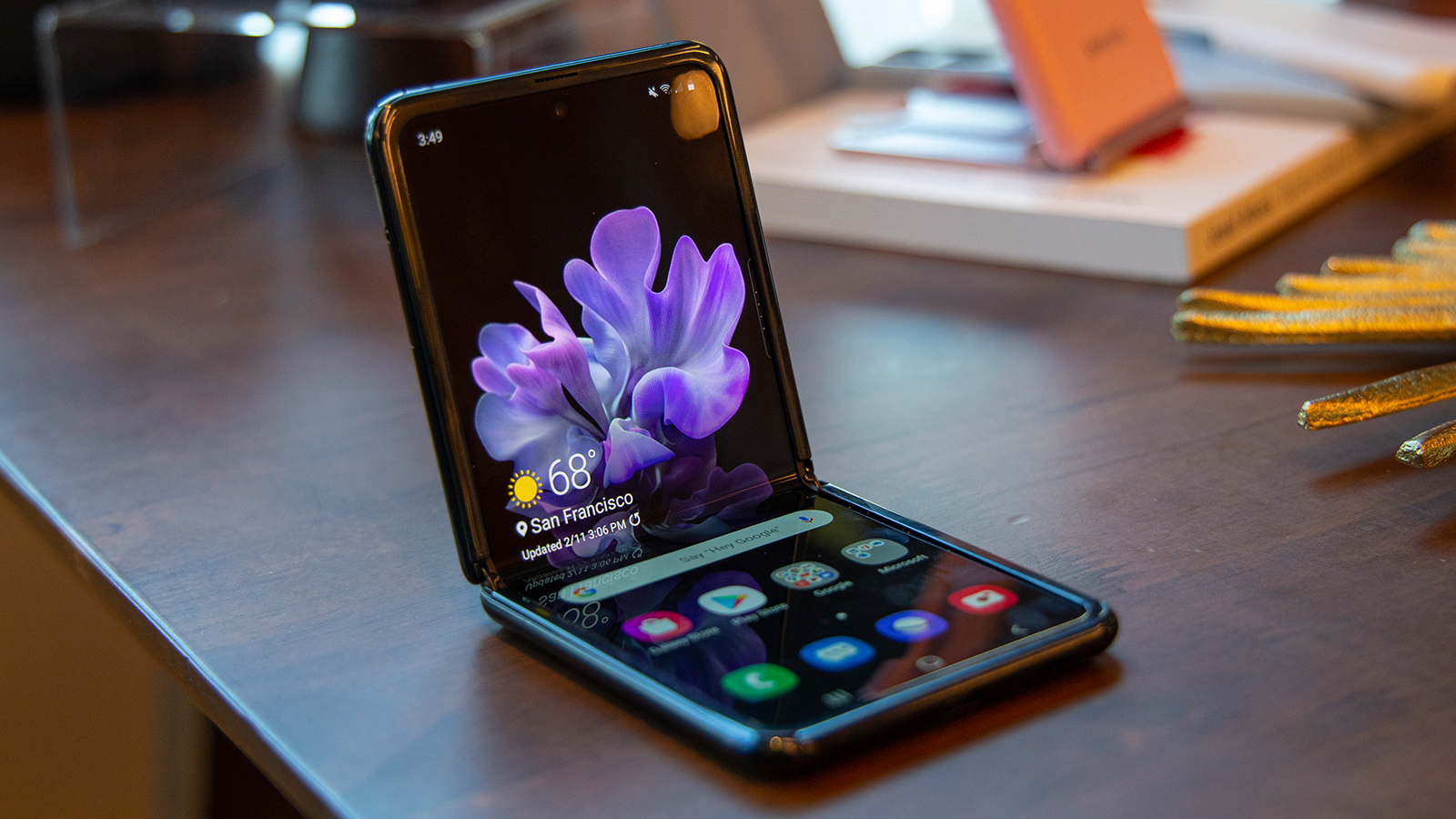
Motorola Razr 2020 vs Samsung Galaxy Z Flip price
The new Motorola Razr 2020 was revealed in September 2020 as a follow-up to the Motorola Razr 2019, which had a delayed release in February 2020 in the US. The Samsung Z Flip was introduced at Samsung Unpacked on February 11, 2020 and released on February 14.
By simple price comparison, the new Razr 2020 costs slightly more at $1,399 / £1,399 (around AU$1,922) than the Z Flip, which retails for $1,380 / £1,300 (around AU$2,050). For phones with little bonus functionality, this is a steep pricetag. It’s not too far away from the Samsung Galaxy Z Fold 2, which is set to cost $1,999 / £1,799 / AU$2,999.
That’s not the whole story: while the Razr 2020 is available far more widely than its predecessor. In the US, it will be available unlocked at Best Buy, B&H Photo, Amazon.com and Motorola.com, and on T-Mobile and AT&T later on (expected in Q3 2020). In the UK, where the phone is called the Motorola Razr 5G, folks can buy it in one color (Polished Graphite) from O2, Vodafone, Tesco, John Lewis, Amazon, Carphone Warehouse, and on Motorola.co.uk. The other colors (Liquid Mercury and Blush Gold) are only available on Motorola's website.
Get daily insight, inspiration and deals in your inbox
Sign up for breaking news, reviews, opinion, top tech deals, and more.
The Samsung Z Flip had a wide US release on AT&T and Sprint as well as retailers like Best Buy and Samsung’s website, though the Covid-19 pandemic had impacted its supply chains and limited its availability.
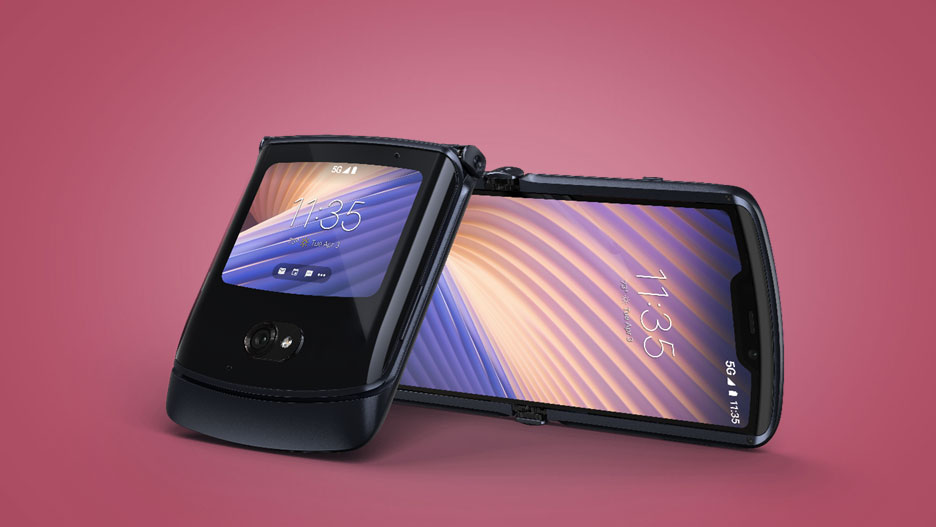
Motorola Razr 2020 vs Samsung Galaxy Z Flip design
The similarities between both devices – clamshell foldables with an interior display about the size of a typical smartphone – belie their very real differences, in both design and use.
Let’s start with the obvious. Yes, both phones fold close into a footprint about half the size of your typical smartphone, making them easier to fit in small pockets. That makes them thicker than standard phones, though the Razr 2020 is the thinner of the two (16mm in the Razr vs. 17.3mm in the Z Flip).
Unfolded, they're about the size of standard smartphones, with everything where you'd expect: lock and volume buttons on the side, earpiece at the top, USB-C port and speakers at the bottom, and 3.5mm jack nowhere to be found.
The Motorola Razr 2020 is a sleek phone with a shorter top end that folds into the scalloped “chin” at the bottom. It’s definitely a throwback look to the original Razr V3's design, and while its spring-loaded hinges let it snap open and closed, there’s too much tension to keep the phone open at any other angle.
Not so with the Samsung Galaxy Z Flip. This phone can stay open at pretty much any angle, and there’s even additional functionality when used in this way, essentially splitting the display into two parts for, say, hands-free selfies.
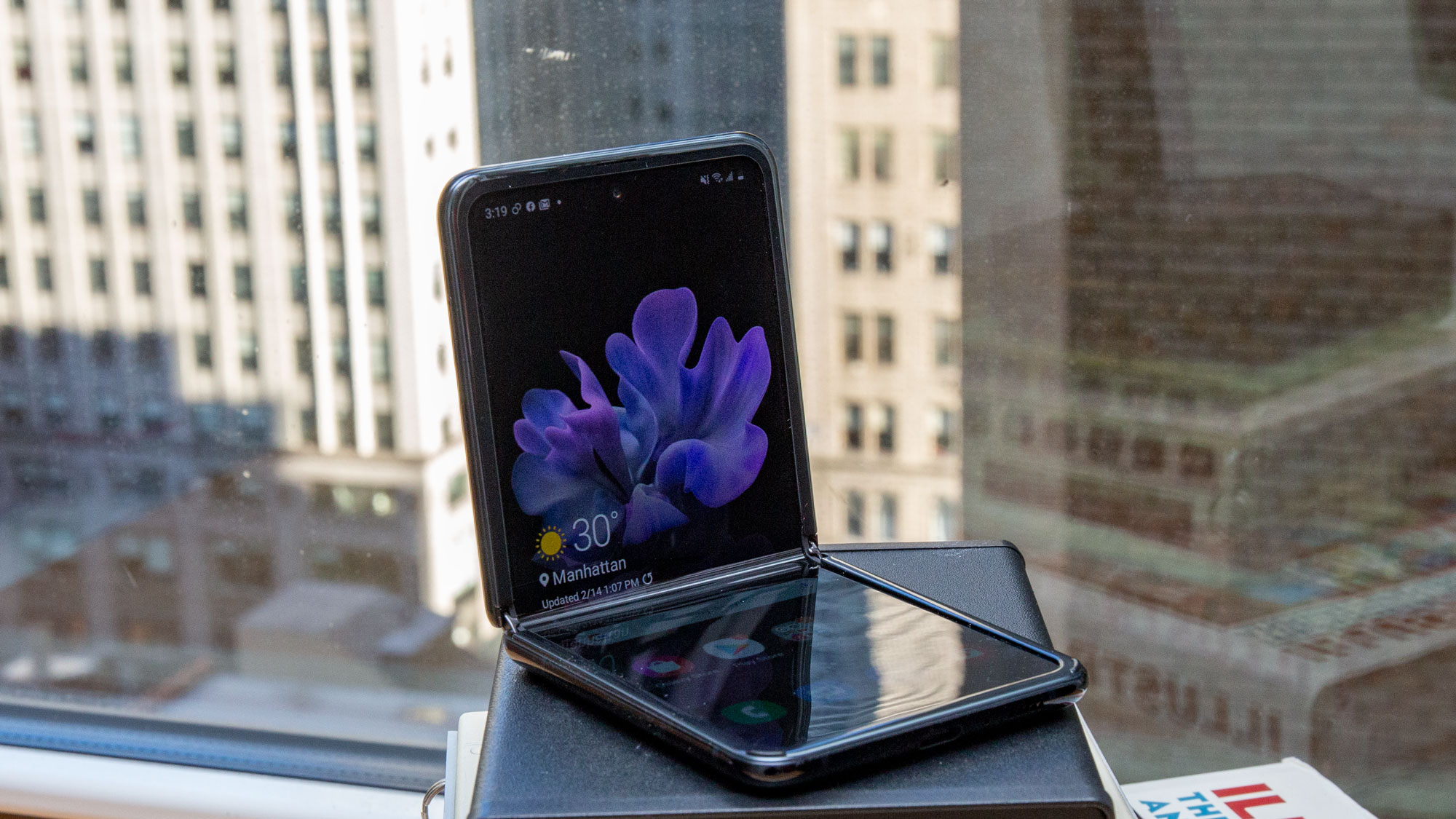
That’s representative of their user experience philosophies. The Razr is meant to be flipped open – with that nostalgic flip-phone feel – or kept closed and use the external mini-display to compose texts, take selfies, and get limited app functionality. The Samsung Galaxy Z Flip can be used at a variety of angles, so its exterior display is very small, mostly used for time and basic media controls – though it will preview your closed-phone selfies if you can see them in the 1.1-inch screen.
The last big thing to point out: the Razr is more compact, but it also lacks a SIM/microSD slot, meaning you’re stuck with the included 128GB of storage in the UK version (256GB in the US and other regions). The Samsung Z Flip has a SIM slot but, again, no microSD slot.
As far as fingerprint sensors, the Razr 2020 has a scanner on the back, which is hopefully better than the erratic chin-mounted sensor on its predecessor. The Z Flip’s side-mounted sensor located in the power button, imported wholesale from the Samsung Galaxy S10e, feels more forgiving in reading fingerprints,
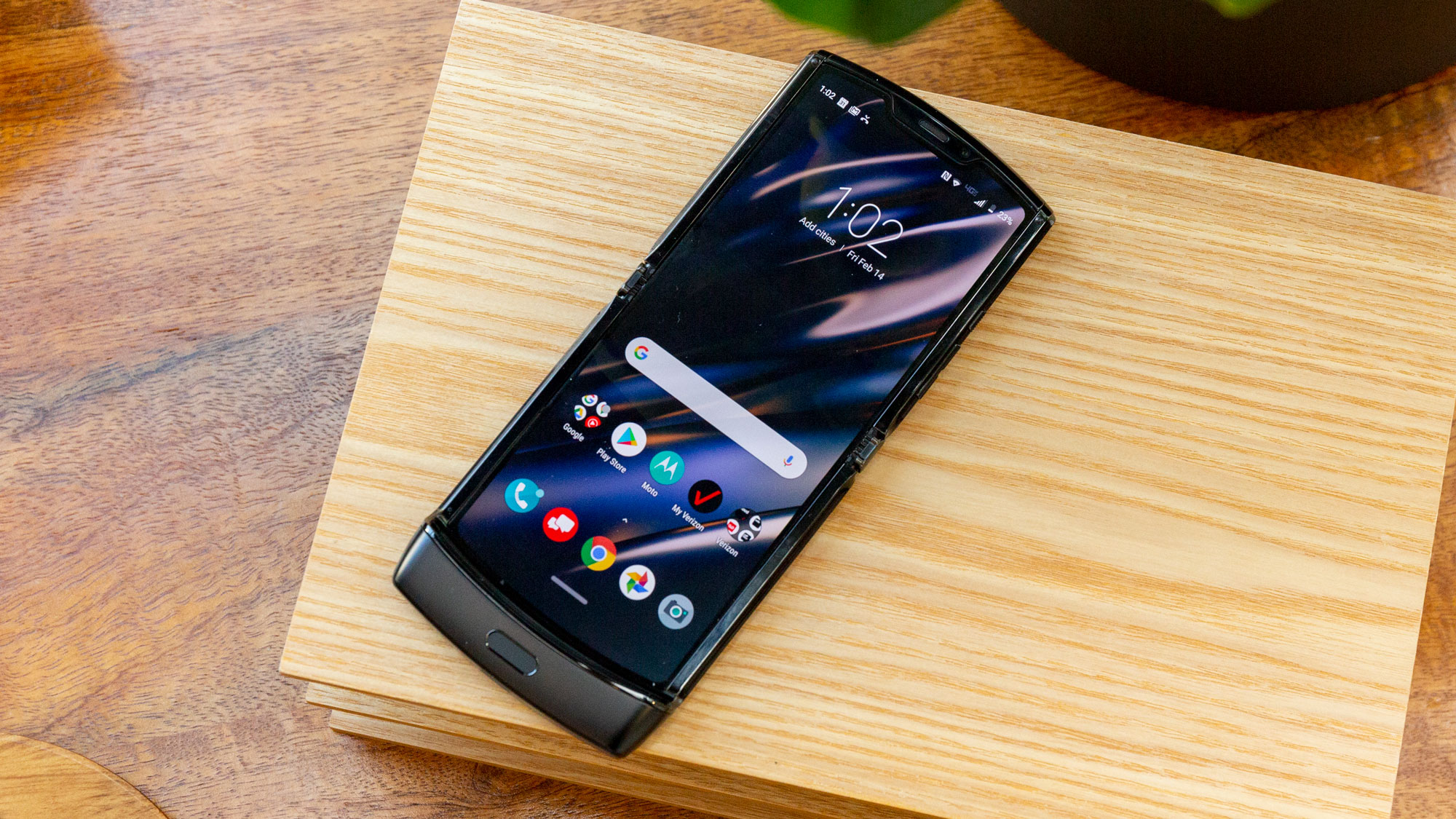
Motorola Razr 2020 vs Samsung Galaxy Z Flip display
Another contentious battleground for foldables is, well, their foldable display. As clamshell devices, both the Razr 2020 and Z Flip have interior screens that unfold into lengths comparable to a standard smartphone display. It’s their material that makes a difference.
The Razr 2020 kepts its predecessor's plastic 6.2-inch P-OLED display, much like that found on the Samsung Galaxy Fold. It’s thin, and you can feel the hinge and phone surfaces underneath when running a finger over it. It operates just like a display on any other smartphone, though its width results in a narrow 2142 x 876 pixel resolution. In the Razr 2019, we found this width to be so slim that video was capped at 720p on YouTube, and we wouldn't be surprised if the same was true with the Razr 2020.
The Z Flip has a larger 6.7-inch AMOLED display - and as Samsung claims, it’s made of an ultra-thin flexible glass, which is a development that phonemakers have been chasing to produce a superior foldable device. But that claim is in question, given that teardowns like those by JerryRigEverything have suffered grooves and scratches from duller materials much like a plastic display.
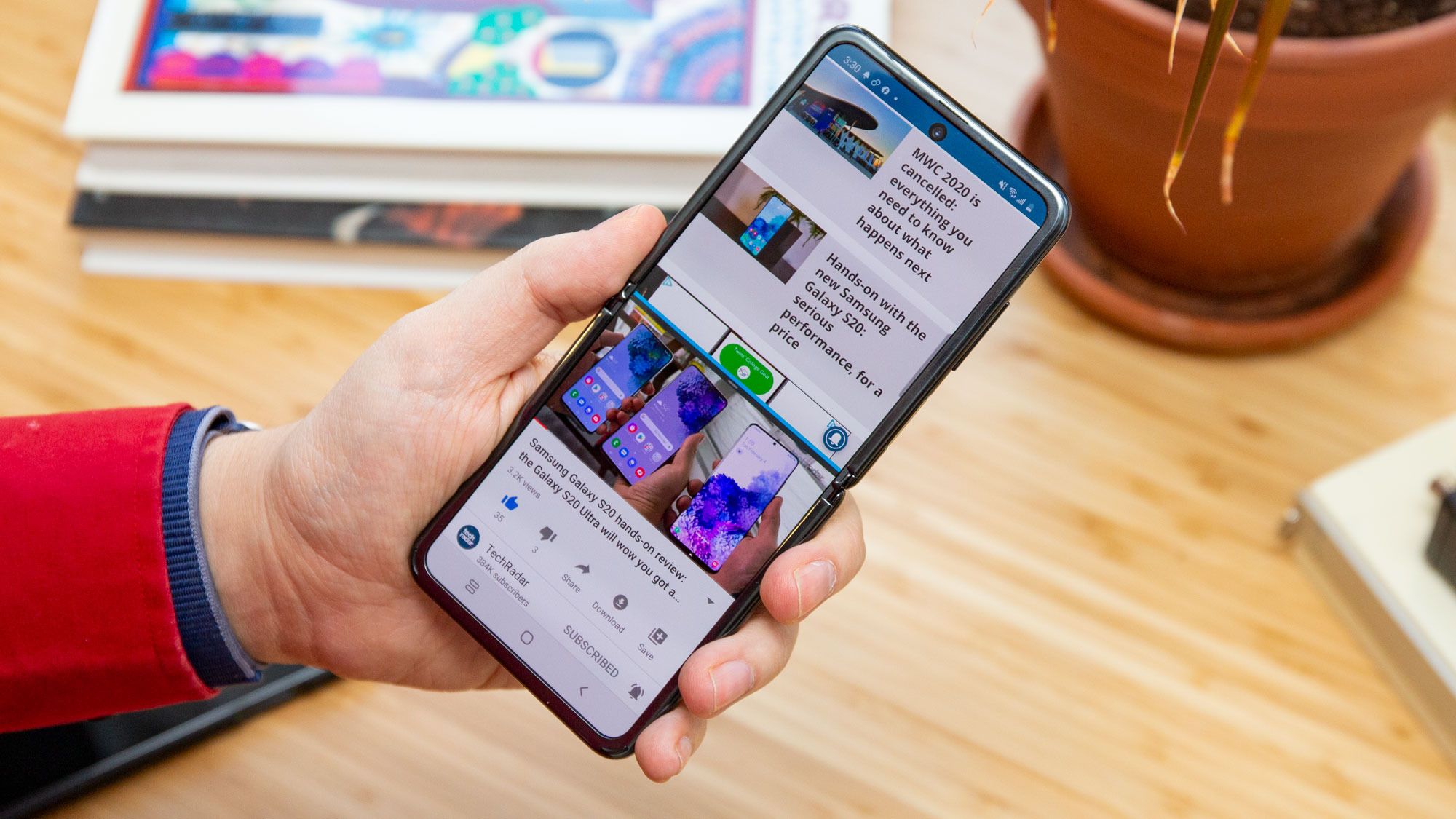
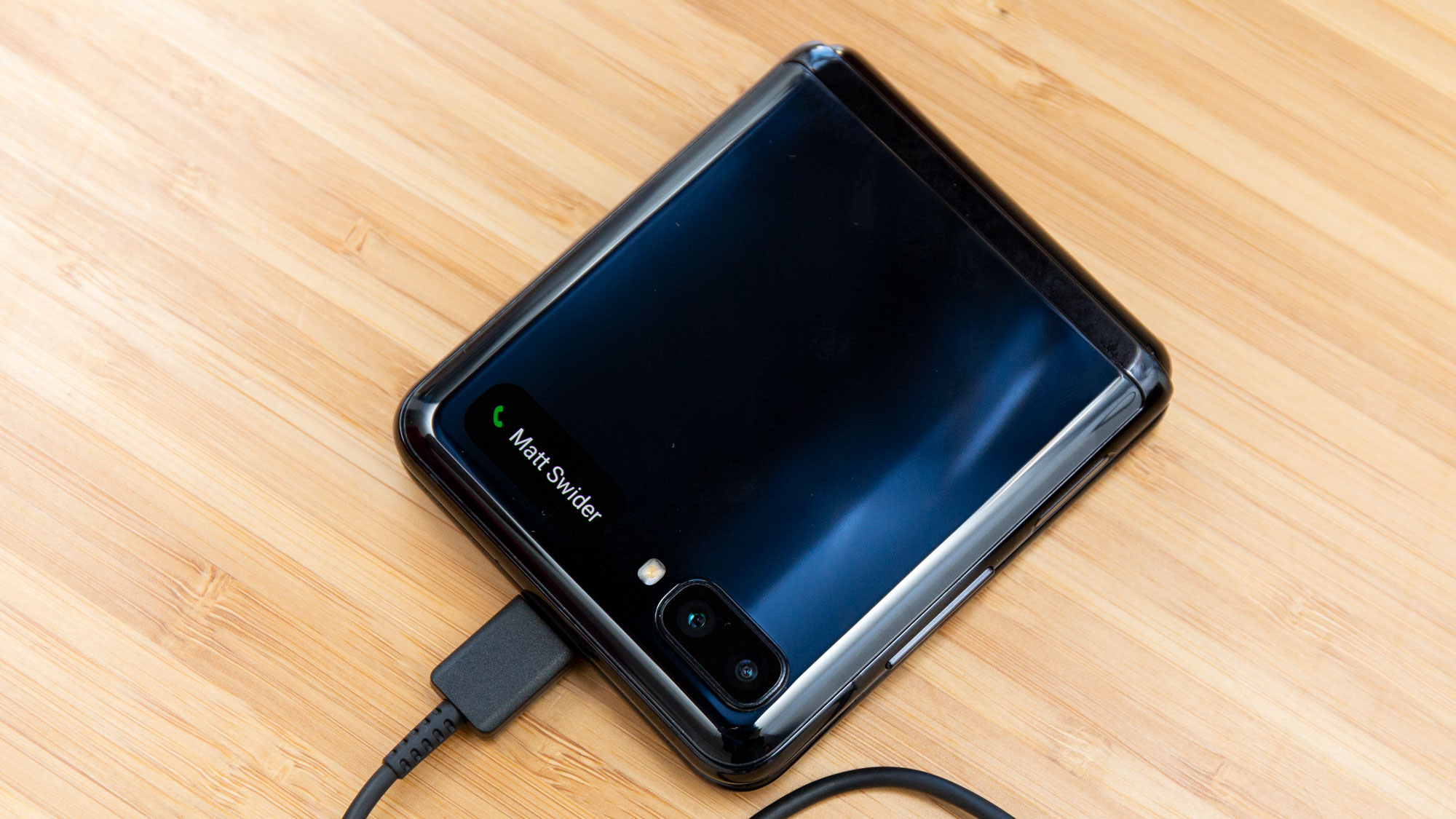
Motorola claims that it's made improvements on the Razr 2020. In order to fold flat, it has a unique design that tucks the display into the hinge. The Razr 2019 emitted audible creaks when the device popped open, which Motorola claims wasn't an indicator of compromised quality, but they made quieter in the Razr 2020 anyway. For the record, the Z Flip doesn't make noises when it opens and closes.
You will pay a bit of a price for the privilege to fold: both phones have different protective measures around their main displays that get in the way of the interface. The older Razr’s thick chin made it a bit annoying to access any bottom-mounted navigation options, and the same may be true of the Razr 2020 (we'll see when we get the device in to review), while the Z Flip’s thick bumper plastic (first implemented in the revised Galaxy Fold to stop users from peeling off the screen protector) actually gets in the way of buttons or the navigation bar.
Finally, there’s the front screens. When folded up, both devices have small-to-tiny glass displays for checking the time, seeing notifications, and previewing selfies. The Razr 2020 has a much bigger 2.7-inch (600 x 800) screen, which works well enough and has more functionality thanks to Android 10, while the Z Flip’s 1.1-inch (300 x 112) screen is barely enough to track time – though you can use it to preview a selfie if you don’t mind squinting.
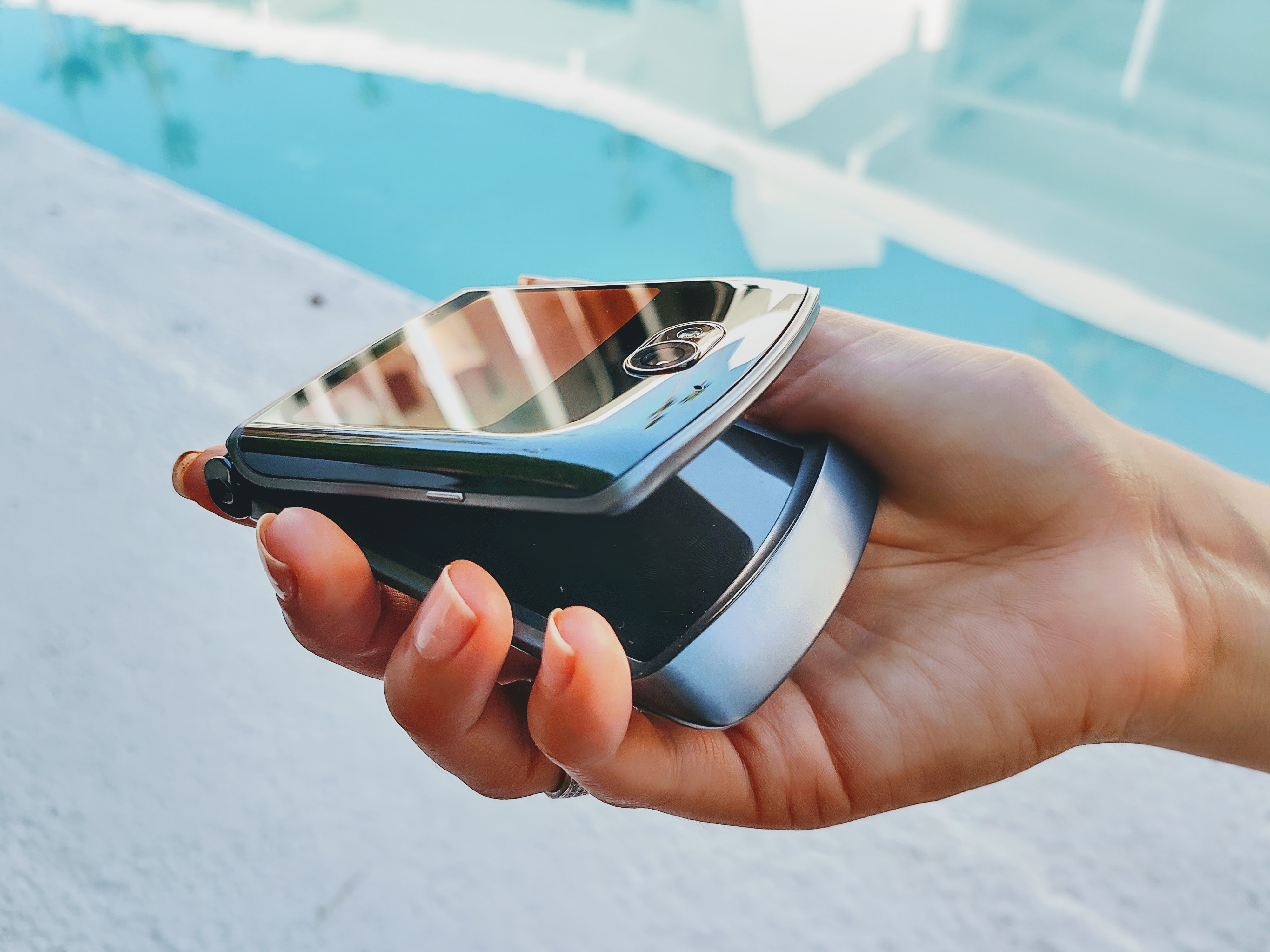
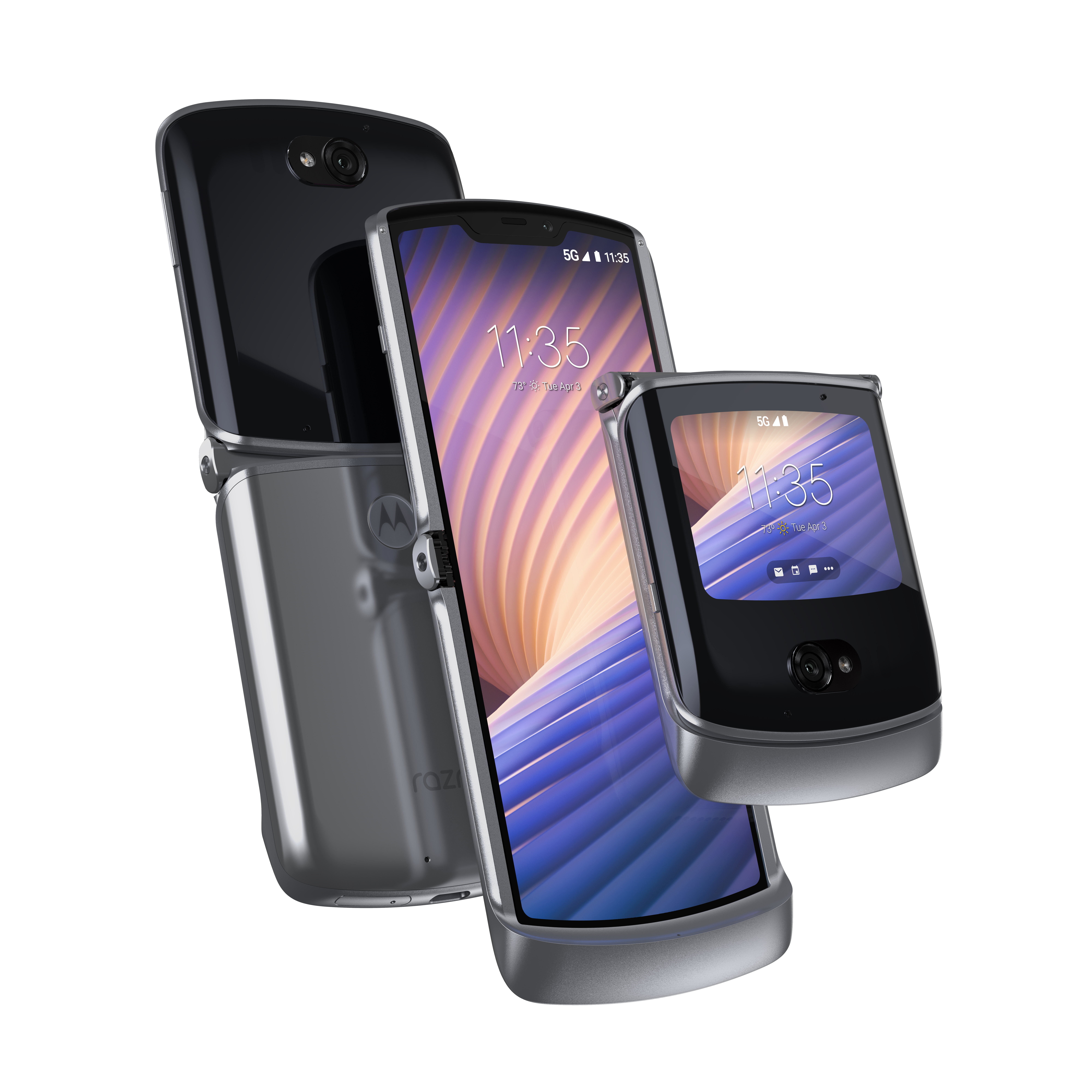
Motorola Razr 2020 vs Samsung Galaxy Z Flip cameras
Both devices follow the same strategy: a main camera setup that can be used for selfies when the phone is closed (via the aforementioned mini screens), but which will primarily take photos while the phone is open.
The Motorola Razr 2020 packs a single 48MP f/1.7 camera on the outside. This is an upgrade on its predecessor's 16MP shooter, which we found took decent selfies, though it had a tough time focusing front-facing shots through the mini-display. Fully open, the Razr 2019's camera performed well in daylight and unremarkably in low-light. Once we get the Razr 2020 out to review, we'll be able to evaluate its camera properly.

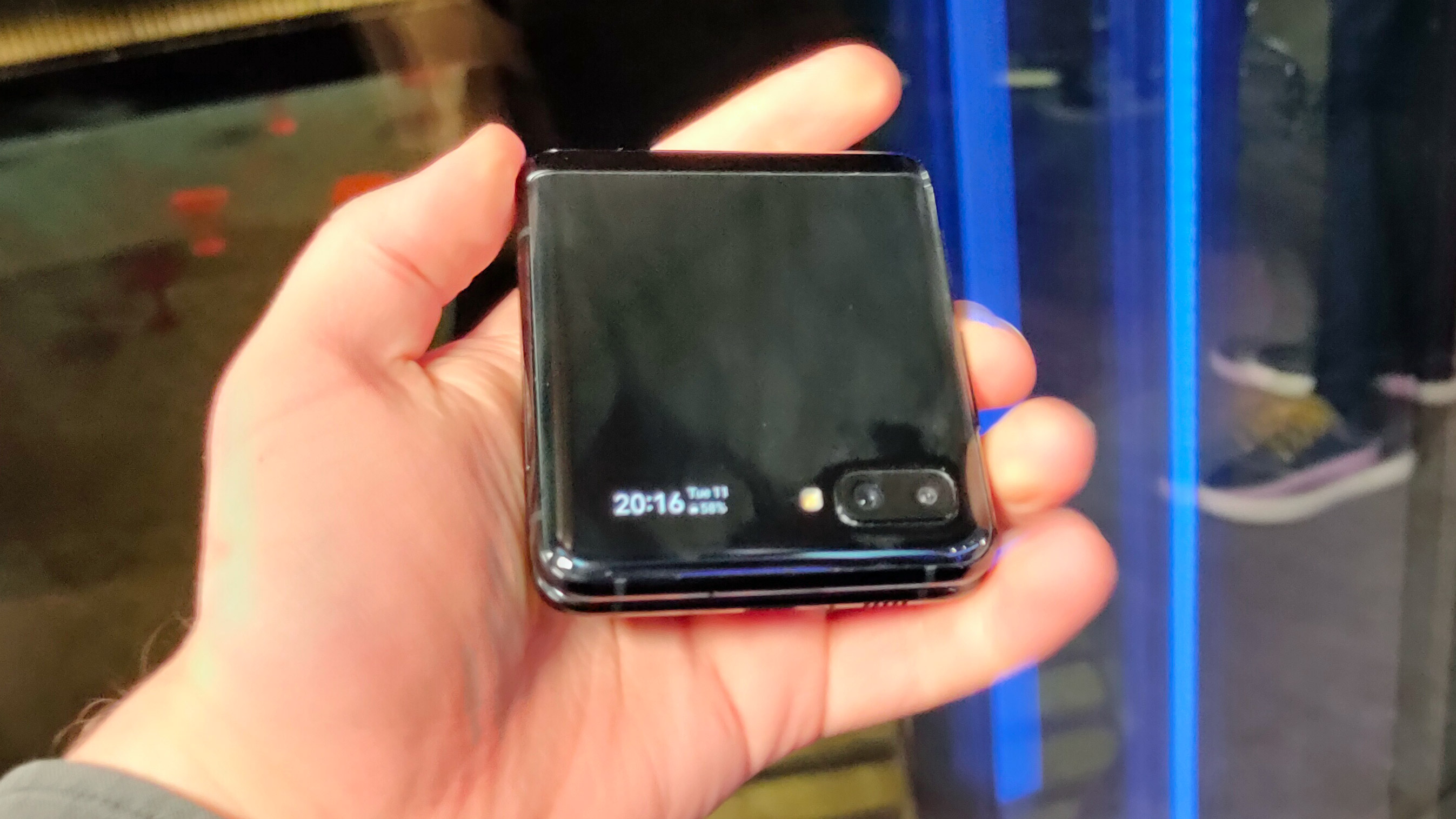
The Galaxy Z Flip wins out – on paper, at least, as supply shortages have meant we haven’t gotten our hands on the phone for longer than a 24-hour review period. But its dual 12MP f/1.8 main + 12MP f/2.2 ultrawide lenses make it a superior package, at least in terms of variety.
Both devices also have smaller front-facing cameras at the top of their internal displays – for video chatting, say, or just to take a selfie while the screen is open. The Razr 2020’s improved 20MP f/2.0 camera is fine and clear enough, which could prove to shoot better than the 10MP f/2.4 camera on the Z Flip.
Based on experience with previously-released phones from both brands, we’d still bet bet the Z Flip outperforms the Razr 2020 in terms of camera performance, but the improvements in the latter's cameras might make the competition a lot closer.
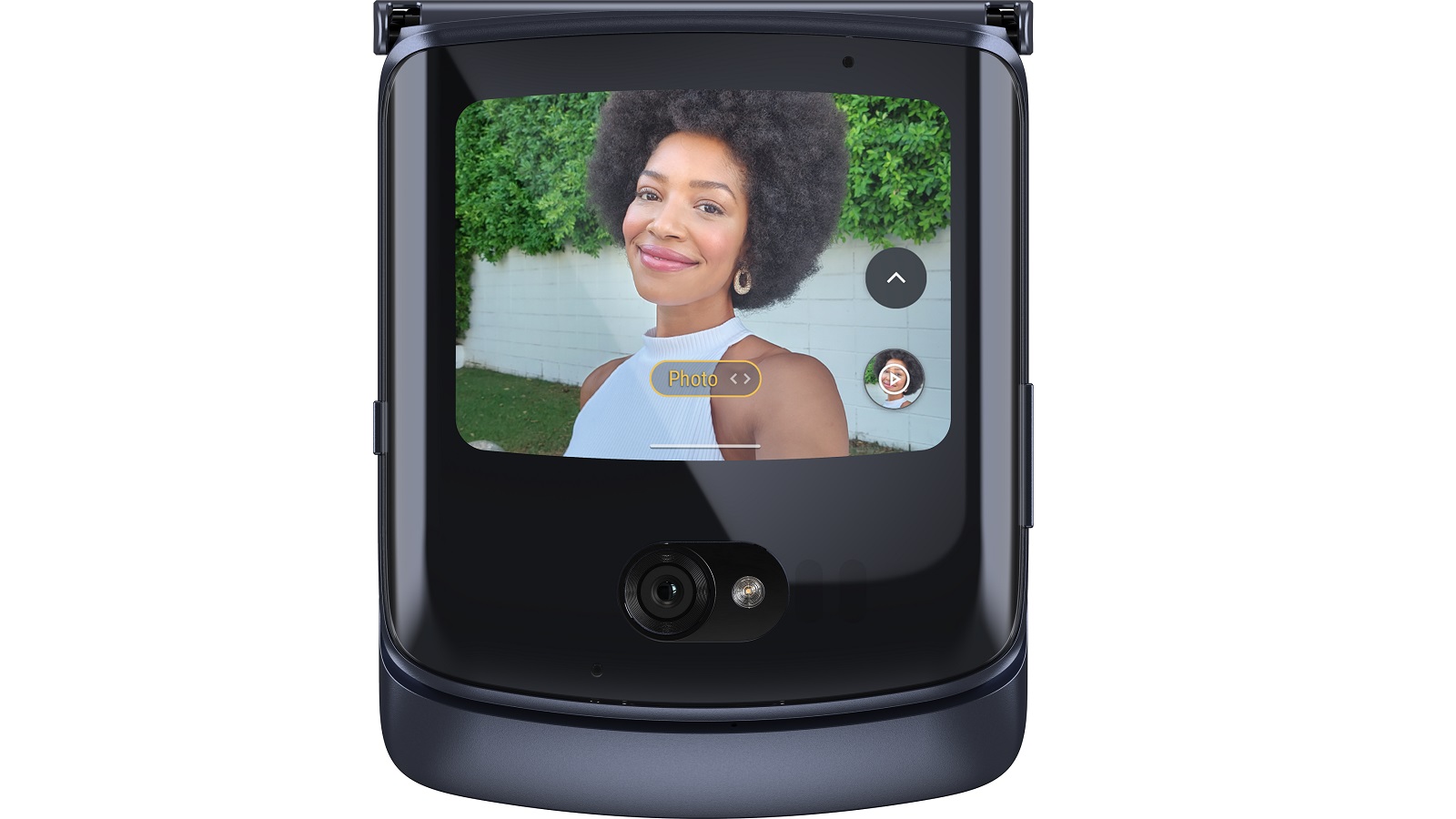
Motorola Razr 2020 vs. Samsung Galaxy Z Flip performance
On paper, this versus will be a pretty clean comparison: the Samsung Galaxy Z Flip is a more powerful phone, full stop.
The Motorola Razr 2020 still has respectable specs, but they’re not quite on the level of pricey flagships. It packs a Qualcomm Snapdragon 765G processor (an upgrade on the Snapdragon 710 in the Razr 2019), a baseline of 6GB of RAM and 128GB of non-expandable storage, though other versions (like the one released in the US) come with 8GB of RAM and 256GB of storage.

The Z Flip, on the other hand, packs the Snapdragon 855 Plus chipset, 8GB of RAM, and 256GB of storage - and on-device space might be its biggest advantage over versions of the Razr 2020, given neither device can be bought in any bigger configurations, nor can they expand via microSD.
Both phones come with Android 10 out of the box, which is to be expected for any phone launching in 2020. The Razr 2020 does have one advantage, thanks to its Snapdragon 765G chipset: 5G connectivity, which will let the device connect with sub-6 5G networks.
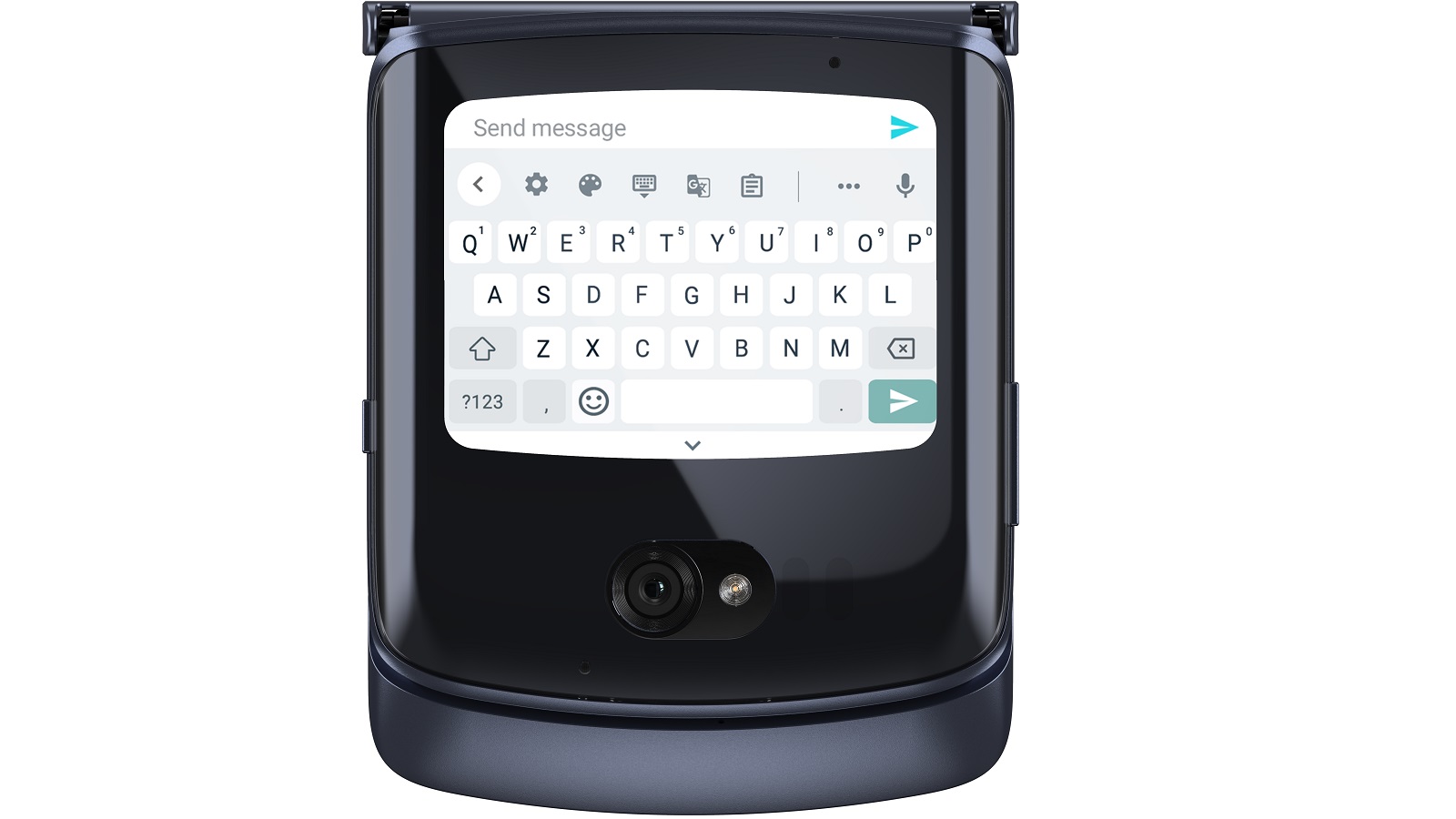
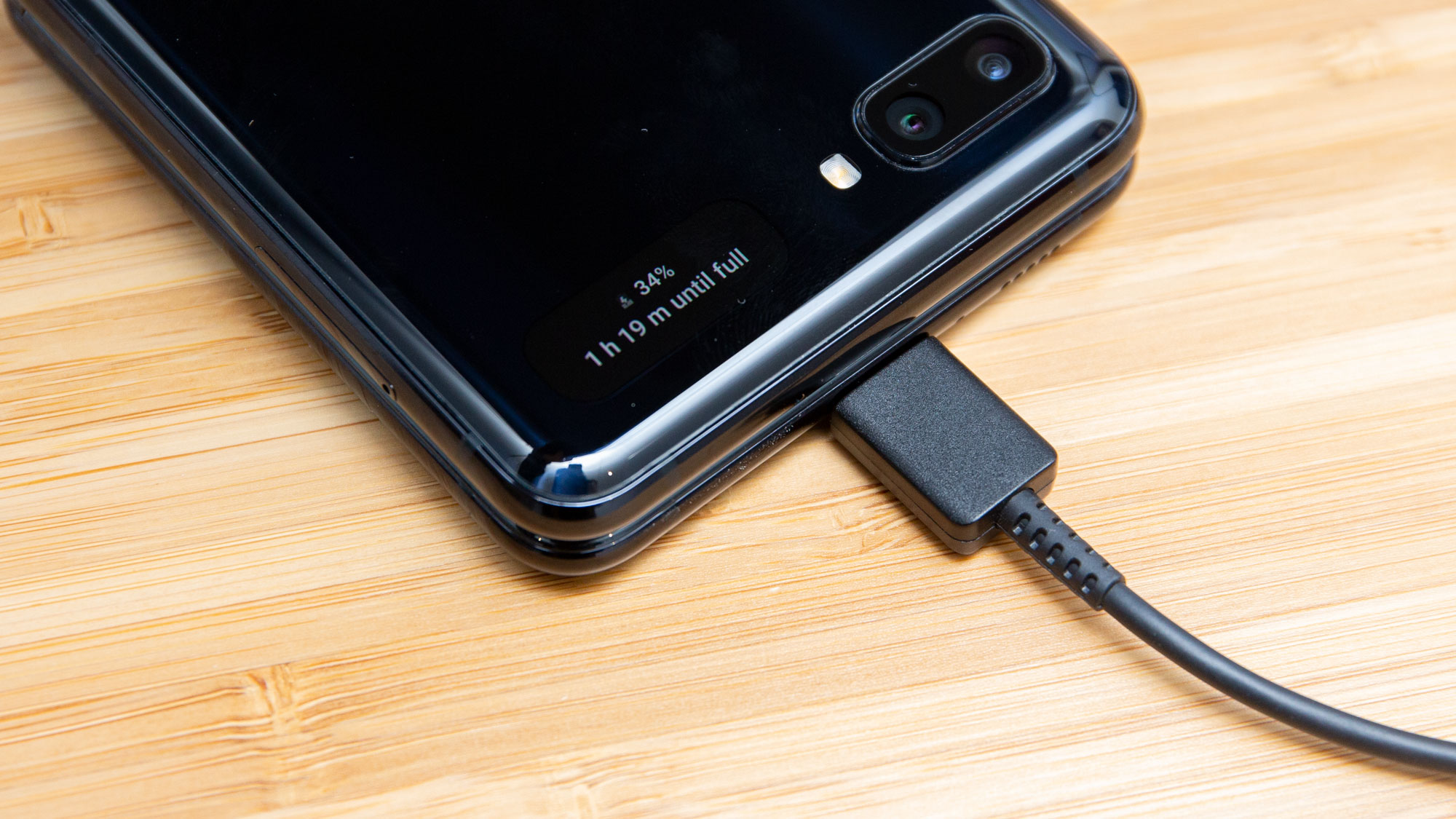
Motorola Razr 2020 vs Samsung Galaxy Z Flip battery
In another consequence of design, the Motorola Razr 2020 comes with a smaller 2,800mAh battery than the Galaxy Z Flip’s 3,300mAh capacity. While we haven’t gotten to test either phone, those sheer numbers lead us to expect longer battery life in Samsung's clamshell foldable.
That’s not a difference in layout, per se: both phones pack batteries in the top and bottom halves of the phone, per iFixit’s Motorola Razr and Galaxy Z Flip teardowns. We can only presume it’s a choice to pack as much in the available space, and the Z Flip seems to have more space. But we should also pay attention to usability patterns.
The lower Razr 2020 capacity isn't quite as damning – per Motorola, users of the original Razr 2019 had the habit of checking their QuickView screens instead of flipping open their phones completely, which saved battery. The same could likely be the case with the new one, evening the playing field to some degree.
Neither phone has terribly fast charging – the Z Flip maxes out at 15W versus the 18W for the Razr - but Samsung’s foldable does have the option to wirelessly charge, which Motorola’s does not.

Takeaway
While the Samsung Galaxy Z Flip still outshines the Motorola Razr 2020 in several (but not all) categories, the revised Razr fixed several of its predecessor's shortcomings, and the two are more comparable – though still pricey. We should restate that clamshell foldables are in their early days. These are two designs that approach the problem – how can smartphones fold? – from two different directions.
At the end of the day, that’s exciting. Competition lowers prices, spurs innovation, and trims away what we dislike. While both the Razr 2020 and Z Flip have things we like, including basic foldability and some neat features that take advantage of the format, there are still things we want, like better battery life, expandable storage and a headphone jack (always have to ask).
Hopefully that’s enough information to help anyone who’s picking between these foldables, but it’s also a look into the future of phones. In the coming years, we wouldn’t be surprised if folding functionality comes to cheaper and cheaper phones until it’s a standard perk that doesn’t push typical smartphone functionality up to premium prices.
- These are the first clamshell-format to hit the market of all the foldable phones
David is now a mobile reporter at Cnet. Formerly Mobile Editor, US for TechRadar, he covered phones, tablets, and wearables. He still thinks the iPhone 4 is the best-looking smartphone ever made. He's most interested in technology, gaming and culture – and where they overlap and change our lives. His current beat explores how our on-the-go existence is affected by new gadgets, carrier coverage expansions, and corporate strategy shifts.
